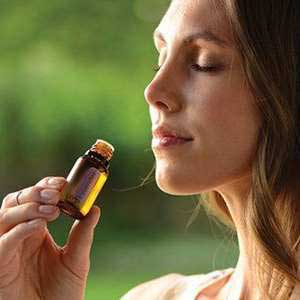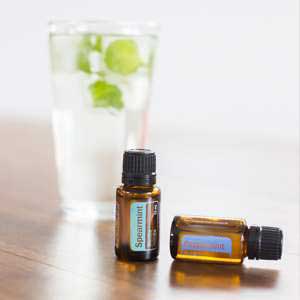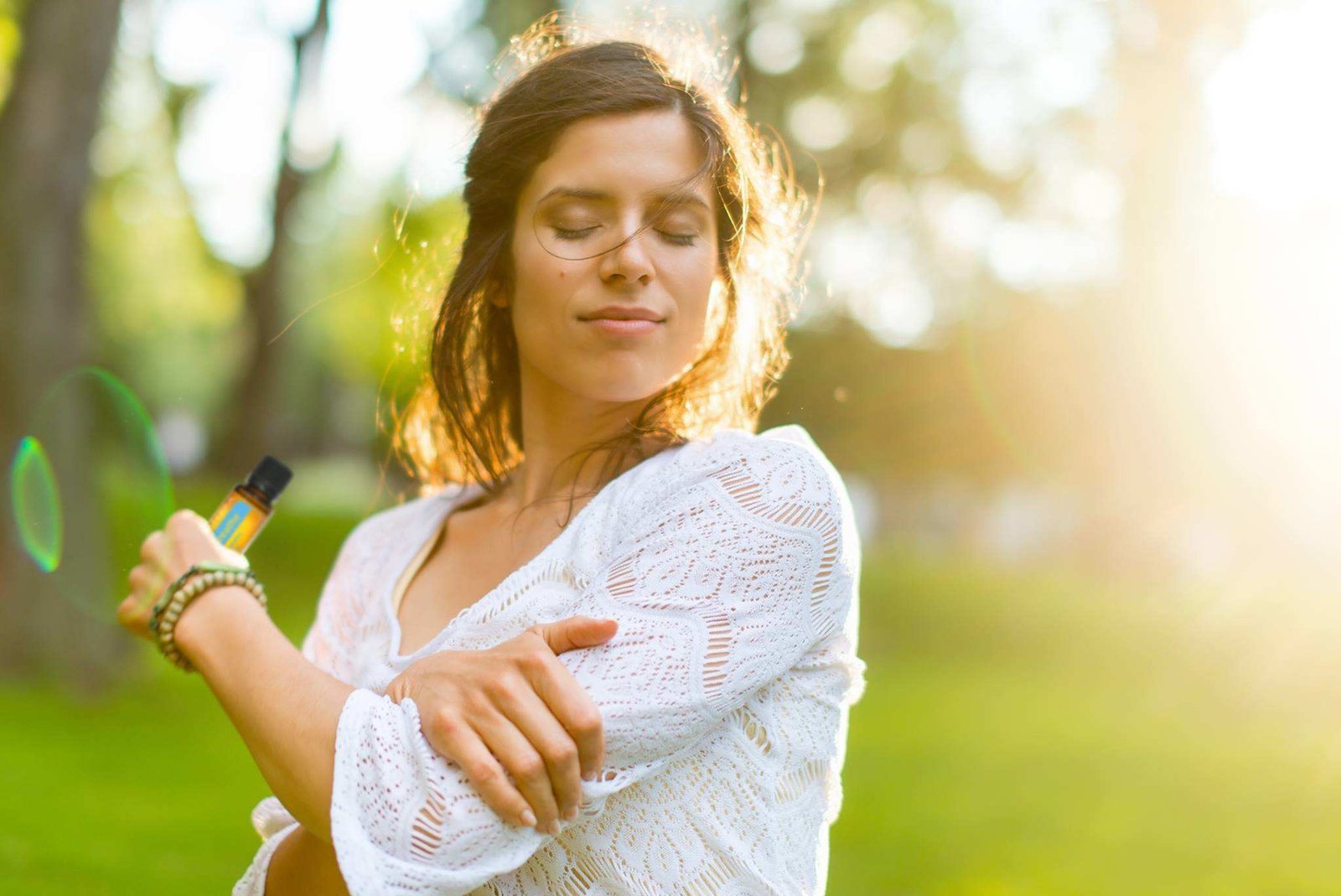Traditionally, certain essential oil application methods have been preferred or used exclusively. However, as the research surrounding essential oils continues to develop, a greater understanding of application methods is now understood. All application methods are safe when used appropriately, including aromatic, topical, and internal methods. One or multiple application methods can be used for a wide range of emotional and physical wellness applications. They can be used a single oil at a time or in complex blends in one of three methods:
3 MAIN WAYS OF USING THE ESSENTIAL OILS ARE:
 The sense of smell is a tool that can elicit powerful physiologic, mental, and emotional responses. Essential oils are quickly absorbed by the smell receptors, which have a direct link to the limbic system by way of the olfactory nerve. The limbic system is part of the brain that supports a variety of functions including smell, emotions, behavior, and memory. For this reason, essential oils have an especially powerful effect via aromatic application.
The sense of smell is a tool that can elicit powerful physiologic, mental, and emotional responses. Essential oils are quickly absorbed by the smell receptors, which have a direct link to the limbic system by way of the olfactory nerve. The limbic system is part of the brain that supports a variety of functions including smell, emotions, behavior, and memory. For this reason, essential oils have an especially powerful effect via aromatic application.
Some essential oils induce uplifting or invigorating effects, while others are more calming. Diffusion is one of the simplest methods for using essential oils aromatically. Diffusers that use cold air or water are ideal. However, using essential oils aromatically does not require any special diffusing devices.
You can achieve the same benefits by simply placing a few drops of essential oil in the palm of your hand that is then cupped around the nose as you breathe deeply.
Additional aromatic uses For Essential Oils Include:
- Apply oil to a cotton ball and place in the air vents of your vehicle
- Mix oils in a spray bottle with water and mist over furniture, carpet, or linens
- Add oil to a batch of laundry or to dryer sheets
- Use in household surface cleaners
 Topical application is a very effective method for applying essential oils. Because essential oils have low molecular weights and are lipid soluble, they easily penetrate the skin. Once absorbed, they stay in the applied area for a localized benefit.
Topical application is a very effective method for applying essential oils. Because essential oils have low molecular weights and are lipid soluble, they easily penetrate the skin. Once absorbed, they stay in the applied area for a localized benefit.
Although essential oils are readily absorbed, there are many ways to increase absorption. Using a light massage will increase the blood flow to the area of application, in turn improving distribution throughout the body. Use of a carrier oil can also increase absorption, especially in skin that is dry or flaky as it helps moisturize the skin and slow evaporation of the oil.
To decrease the likelihood of developing a skin sensitivity, especially on young or sensitive skin, it is advisable to use a carrier oil (such as Fractionated Coconut Oil) to dilute more potent oils and when trying an oil for the first time. The recommend dilution ratio is typically one drop of essential oil to three drops of carrier oil.
It’s always advisable to use several small doses throughout the day rather than a single large dose. Start with the lowest possible dose (1-2 drops). A topical dose can be repeated every 4-6 hours as needed. Because every individual is unique, the dose will vary for each individual based on size, age, and overall health status.
Beneficial Areas You Can Apply Essential Oils
- Neck
- Forehead and temples
- Chest and abdomen
- Arms, legs, bottom of feet
Other Effective Methods of Topical Application
- Add a few drops of oil to a warm bath
- Make a hot or cold compress by soaking a towel or cloth in water, adding essential oils, and then applying to the desired area
- Add oil to a lotion or moisturizer and then apply to skin
Sensitive Areas to be Avoided:
- Some facial areas, such as the skin around the eyes
- Eyes and inner ears
- Broken, damaged, or otherwise injured skin
 Certain essential oils have a rich culinary history and can be used as dietary supplements supporting a variety of conditions. When you sprinkle cinnamon on your oatmeal, sip a mug of peppermint tea, or add fresh basil leaves to your spaghetti, you are actually consuming some volatile aromatic essential oil compounds.
Certain essential oils have a rich culinary history and can be used as dietary supplements supporting a variety of conditions. When you sprinkle cinnamon on your oatmeal, sip a mug of peppermint tea, or add fresh basil leaves to your spaghetti, you are actually consuming some volatile aromatic essential oil compounds.
Essential oil contributes many benefits as well as flavoring and aroma properties to foods. When in their concentrated form, essential oils can be used as dietary supplements for more targeted and potent benefits. Internal use is a very safe and effective method of application because of the sophisticated physiologic processes of our bodies.
When ingested, essential oils directly enter the blood stream via the gastrointestinal tract, where they are transported throughout the rest of the body. Essential oils are lipid soluble so they are readily transported to all organs of the body, including the brain. Then, like all things we consume, essential oils are metabolized by the liver and other organs and are then excreted.
The composition of essential oils is highly complex. Each constituent possesses a unique set of biochemical properties that react with cells and organs in different ways. Although these mechanisms of action are not completely understood, the positive end results have been demonstrated. However, the body is only equipped to handle appropriate doses of essential oils.
Proper dosing according to labeling recommendations and other professional guidelines should be strictly followed to avoid toxicity.
Effective Methods of Internal Application
- Use oils in recipes for cooking or baking to replace fresh or dried herbs and spices
- Remember that essential oils are much more potent than dried or fresh herbs and spices, so start with a very small amount
- For more potent oils, it may be better to administer them by toothpicks (dip the end of a clean toothpick into the oil and then add to the food) rather than drops
- Add essential oils to water, smoothies, milk, tea, or other drinks
- Take essential oils internally in a veggie capsule or add to a small amount of applesauce or yogurt
Essential Oil Uses & Benefits
- All-purpose cleaner: Add three drops each of lemon oil and tea tree oil to a few ounces of warm water, then spray countertops to naturally disinfect.
- Natural mosquito repellent: Combine one drop each of lemongrass oil, citronella oil and eucalyptus oil with one teaspoon of coconut oil to make natural bug spray and rub on exposed skin. Reapply as needed.
- Sports gear: If your kids play sports, add two drops each of tea tree oil and lemon essential oil to one quart of warm water; next add four tablespoons of baking soda and mix. Use to clean ripe (!) jerseys, cleats and sports gear.
- Clean air: Diffuse cinnamon essential oil in the air and enjoy its anti-microbial properties.
- Homemade peppermint patties: Use peppermint oil, coconut oil, dark chocolate and raw honey to make real peppermint treats.
- Washing machine: Add 10-20 drops of your favorite scent per load.
- Vacuum cleaner: Add 5-10 drops of your favorite oil in your vacuum bag or dust container.
- Homemade sunscreen: Mix coconut oil, zinc oxide, shea butter, helichrysum oil and lavender essential oil, then store in a squeeze bottle to make homemade toxic-free sunscreen.
- Eliminate shower curtain scum: Using a 16-ounce spray bottle, use four drops of eucalyptus essential oil and four drops of tea tree oil (melaleuca) with warm water; spray onto your shower for natural mold killing action.
- Clean burnt pans: Use a few drops of lemon oil and some boiling water to help remove burnt food from pots and pans.
- Wonderful smelling home: Diffuse clove, rosemary and orange essential oils when guests come over, and they will talk about how amazing your house smells.
- Carpet cleaner: Mix 20 drops of tea tree oil with Borax for homemade carpet powder.
- Kill pests: Spray orange essential oil and clove oil to kill pests on contact.
- Lavender cake: Mix coconut flour, raw honey, organic eggs and lavender essential oil and bake at 350 degrees.
- Eliminate mold: Add tea tree oil to your diffuser to kill mold and other pathogens in the air.
- Christmas scent: Add a drop of pine, sandalwood or cedarwood oil on a fire log about 30 minutes before burning.
- Reduce anxiety: Diffuse lavender essential oil around your home to reduce feelings of stress and tension.
- Bathtub scrub: Mix one-half cup of baking soda, one-half cup of vinegar and five drops of bergamot or lime oil; use as a scrub for a sink or bathtub.
- Freshen trash can: Put a cotton ball with two drops each of lemon oil and tea tree oil at the bottom of the trashcan to help decrease the odor and detoxify.
- Wash produce: To clean fruit and vegetables, add two drops of lemon oil to a large bowl of water, then wash.
- Clean kitchen smell: Add a few drops of clove, cinnamon or citrus essential oil to a simmering pan of water to get rid of cooking odors.
- Bathroom freshener: Put a cotton ball soaked in lime or lemon oil behind the toilet for a bathroom refresher.
- Purify fridge: To freshen up the fridge or freezer when cleaning, add a few drops of lime, grapefruit or bergamot oil to the rinsing water.
- Mint tea: Use 1-2 drops of peppermint essential oil in your favorite tea for a hint of mint.
- Eliminate smoke: To remove cigarette smoke, put four drops of rosemary, tea tree and eucalyptus oil in a spray bottle and spray around the house.
- Detoxify the air: Add peppermint and eucalyptus oil to a gallon of paint to dispel fumes.
- Get rid of shoe smell: To remove the smell from shoes, add a few drops of tea tree oil and lemon oil to freshen them up.
- Flavored lemon water: Use 2-3 drops of lemon oil in water for a delicious citrus flavor.
- Cleaner dishes: Add a few drops of lemon oil to the dishwasher before washing for a spot-free rinse.
- Physician kit: Makeover your medicine cabinet and create a family physician kit with essential oils of lavender, lemon, peppermint, tea tree, oregano and frankincense.


